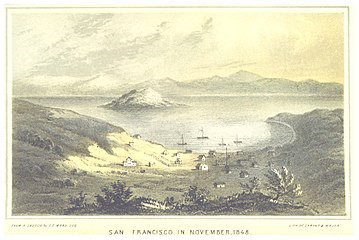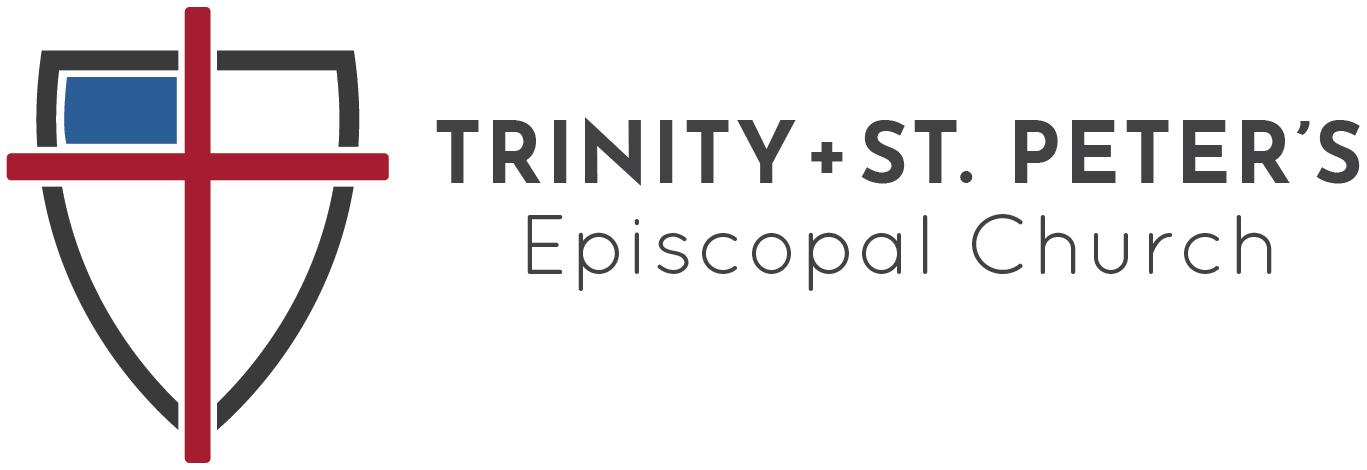
In the Beginning…Yerba Buena 1.0
By Jennifer Dwight
Before the 1848 discovery of gold in California, Yerba Buena Cove in Alta California was already being transformed by international machinations which would lead to the birth of San Francisco, and become foundational pieces in the origin stories of our church.
Inspired by the American Revolution, in 1810 Mexico ignited its rebellion against the yoke of Spain, which it had carried in some manner since the Spanish began exploring, trading, colonizing, building missions, and enslaving in the Americas in 1542. By 1822, Spain capitulated and the First Mexican Empire was born. Alta California, a Mexican jewel, was then overseen by Governor Jose Maria Figueroa.
The area known as Yerba Buena Cove, in which North Point, Black Point, and Sausalito were situated, had no place for ships to dock, despite its years of being a cherished destination for smugglers. Instead, they knew where to anchor their ships in the Bay to trade and sell all kinds of goods from all over the world, ill-gotten or otherwise. These included clothing, fabric, jewelry, alcohol, opium, food, spices, musical instruments, furniture, etc. for which the local residents, Los Californios, had avid appetites. While Monterey was the legitimate point of entry at that time, Yerba Buena was off the radar, and without docks. Yerba Buena Cove was an international trading hot spot well before the Gold Rush.
Frustrated shipmasters finally petitioned Governor Figueroa to establish a port of entry for them there. In October 1835 Figueroa tasked Francisco de Haro, the Alcalde of Mission Dolores, with the job. De Haro established Yerba Buena Cove’s official point of entry to be on a street called La Calle de la Fundacion. Figueroa also appointed Capt. William A. Richardson, a naturalized Mexican citizen and businessman from Sausalito, to be the captain of the new port.
Richardson first built a dwelling which was part tent and part house, to which he relocated his family, to become the first residents of the town of Yerba Buena. The following year he erected a large adobe home there known as “Casa Grande”. It was situated between Clay and Washington Streets on La Calle de la Fundacion. After the 1906 earthquake this street was renamed Grant Ave., after President Ulysses S. Grant. Today there is a commemorative plaque marking the location at 823 Grant Ave., which is entitled, “The Birthplace of a Great City.”
The original port of entry for Yerba Buena is where The Dragon Gate at the entrance to Chinatown now stands at Grant & Bush Streets.
By 1836 Yerba Buena was a settlement of 30 to 40 houses standing in sand hills around a plaza (now Portsmouth Square). In 1839, Governor Alvarado directed a survey to be made, to map out the area now bordered by Broadway, Montgomery, Powell and California Streets. Within eight years the town had approximately 800 residents, was United States territory and called San Francisco. And many of Trinity’s founders were making big plans.
To be continued…
[https://www.sfhistory.org/event/program-yerba-buena-cove-a-history-of-smuggling/ last visited on Aug. 30, 2023.]
[Samuel L. Lupton, “The Making and Naming of the Streets of San Francisco,” The San Francisco Call. Sept. 8, 1901, pp. 5 and 7 (Magazine Section) available at https://web.archive.org/web/20180306225108/http://www.sfgenealogy.com/sf/history/hgstr.htm accessed on June 9, 2023.]
[https://www.readtheplaque.com/plaque/birthplace-of-a-great-city]
